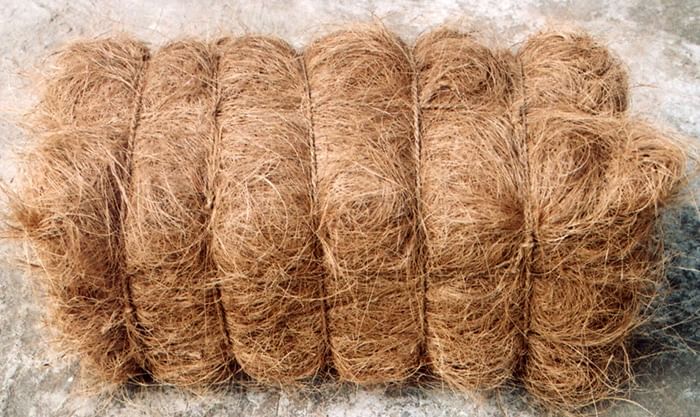Class 7 Science Question Answers - Fibre to Fabric
Important Questions:
Question: 1. Classify the following fibre as natural or synthetic.
Nylon, Wool, Cotton, Silk, Polyester and Jute
Answer- Nylon and polyester are synthetic fibre.
Wool, cotton, silk and jute are natural fibre.
Question: 2. State whether the following statements are true or false.
(a) Yarn is made from fibre. (T)
(b) Spinning is a process of making fibre. (T)
(c) Jute is the outer covering of coconut. (F)
(d) The process of removing seed from cotton is called ginning. (T)
(e) Weaving of yarn makes a piece of fabric. (T)
(f) Silk fiber is obtained from the stem of a plant. (F)
(g) Polyester is a natural fiber. (F)
Question: 3. Fill in the blanks:
(a) Plant fibre are obtained from------ and------
Answer: - plants and animals.
(b) Animals fibre are-------- and -------
Answer: - wool and silk.
Question: 4 - From which parts of the plant cotton and jute are obtained?
Answer- Cotton is obtained from fruits of cotton plant and jute is obtained from stem of the jute plant.
Question: 5 - Name two items that are made from coconut fiber.
Answer: - Rope and doormats.
 Coconut FiberQuestion: 6 - Explain the process of making yarn from fiber.
Coconut FiberQuestion: 6 - Explain the process of making yarn from fiber.
Answer: Fiber is made from yarn by spinning. Spinning is done manually as well as using machines by twisting fiber; like rope making.
Short Questions:
Q1:You must be familiar with following nursery rhymes:
- ‘Baa baa black sheep, have you any wool’.
- ‘Marry had a little lamb, whose fleece was white as snow’.
Answer the following:
- Which parts of the black sheep have wool?
- What is meant by the white fleece of the lamb?
Ans:
- The hairy skin called fleece have wool in black sheep.
- White fleece means the hairy skin which is white in colour.
Q2: The silkworm is (a) a caterpillar, (b) a larva. Choose the correct option.
(i) a (ii) b (iii) Both a and b (iv) neither a nor b.
Ans: (iii)
Q3: The silkworm is (a) a caterpillar, (b) a larva. Choose the correct option.
(i) yak (ii) camel (iii) goat (iv) woolly dog.
Ans: (iv)
Q4: What is meant by the following terms?
- Rearing
- Shearing
- Sericulture
Ans: Rearing - Rearing of animals means taking care of economically useful animals by managing their breeding, feeding, medical care etc. for obtaining one or more of their product useful for human beings e.g., apiculture, sericulture.
Shearing - The process of removing the fleece of the ship along with thin layer of skin is called shearing.
Sericulture - The rearing of silk worms for obtaining silk is called sericulture.
Q5: Given below is a sequence of steps in the processing of wool. Which are the missing steps? Add them.
Shearing, _____________, sorting, ________, __________.
Ans: Shearing, scouring, sorting, picking out of burrs, colouring, rolling
Q6: Out of the following which are the two terms related to silk production: sericulture, floriculture, moriculture, apiculture, silviculture.
Ans: Sericulture, Moriculture
Q7: Match the items in column I with those in column II:
| Column I | Column II |
1. Scouring 2. Mulberry leaves 3. Yak 4. Cocoon | (a) Yields silk fibers. (b) Wool yielding animal (c) Food of silkworm (d) Cleaning sheared skin |
Ans: 1-d, 2-c, 3-b, 4-a.
|
26 videos|32 docs|9 tests
|
FAQs on Class 7 Science Question Answers - Fibre to Fabric
| 1. What is Fibre to Fabric? |  |
| 2. What are the different types of natural fibres used in the Fibre to Fabric process? |  |
| 3. What is the difference between natural and synthetic fibres? |  |
| 4. What are the different techniques used in the Fibre to Fabric process? |  |
| 5. What are some common fabrics produced through the Fibre to Fabric process? |  |






















